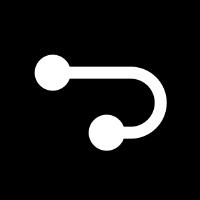Agentic AI Comparison:
AgentGPT vs AutoGLM Rumination
Introduction
This report provides a detailed comparison between AgentGPT and AutoGLM Rumination across five key metrics: autonomy, ease of use, flexibility, cost, and popularity. Both represent advances in agentic AI, but take distinctly different approaches and serve different audiences. The following analysis evaluates their strengths and weaknesses based on current expert and community feedback as of June 2025.
Overview
AgentGPT
AgentGPT is a cloud-based platform that enables users to create and deploy autonomous AI agents capable of multi-step reasoning and task execution. It is designed for general-purpose applications and prioritizes a user-friendly experience, making agent creation accessible to a broad audience. AgentGPT leverages advanced language models to allow agents to plan, self-correct, and complete complex workflows with minimal manual intervention.
AutoGLM Rumination
AutoGLM Rumination, by Zhipu AI, is a research-focused, free AI agent optimized for deep reasoning, multi-step research, and autonomous execution across a variety of tasks, including web search, content generation, and report writing. It is based on Zhipu’s proprietary GLM-Z1-Air and GLM-4-Air-0414 models, featuring modular tool use, real-time web navigation, and workflow automation. Emphasizing proactive intelligence, AutoGLM Rumination is positioned as an autonomous research and productivity tool for both individuals and organizations.
Metrics Comparison
autonomy
AgentGPT: 8
AgentGPT automates complex workflows with self-correction and planning, delivering robust autonomous behavior for general scenarios. However, its autonomy is typically bounded by pre-set user goals and available integrations.
AutoGLM Rumination: 9
AutoGLM Rumination is specifically engineered for proactive operation, conducting deep research, dynamic web navigation, and end-to-end task execution with minimal user intervention. Its architecture is designed around full agentic autonomy.
Both agents show high autonomy, but AutoGLM Rumination’s design philosophy and tool integration give it an edge in unsupervised research and real-time action.
ease of use
AgentGPT: 9
AgentGPT emphasizes a plug-and-play, intuitive UX for non-technical users, making agent creation and configuration straightforward via a web interface. This accessibility greatly lowers the barrier for adoption.
AutoGLM Rumination: 6
AutoGLM Rumination delivers powerful capabilities, but is not strictly plug-and-play. Users may encounter a steeper learning curve due to its research focus and modular framework, which can demand more setup and understanding.
AgentGPT is markedly easier for beginners and general users, while AutoGLM Rumination caters to advanced users comfortable with configuring and directing research workflows.
flexibility
AgentGPT: 8
AgentGPT supports a wide range of general-purpose tasks and can be customized for various workflows, though its true depth depends on available integrations and platform limits.
AutoGLM Rumination: 9
AutoGLM Rumination’s tool-use architecture, real-time web interaction, and code execution make it extremely versatile for research-intensive and autonomous workflows, supporting both standard and advanced use cases.
AutoGLM Rumination demonstrates greater flexibility in research and autonomous productivity, while AgentGPT excels at rapid general deployment.
cost
AgentGPT: 6
AgentGPT typically operates under a subscription or usage-based pricing model, which may limit access for some users compared to free alternatives.
AutoGLM Rumination: 10
AutoGLM Rumination is entirely free, democratizing access to advanced agentic AI and eliminating financial barriers, which is highly disruptive in the current paid-tool landscape.
AutoGLM Rumination’s zero-cost model is a significant differentiator, enabling broader adoption, especially among individuals and small businesses.
popularity
AgentGPT: 8
AgentGPT benefits from early market entry, established brand presence, and a large active user base, particularly in Western markets.
AutoGLM Rumination: 7
AutoGLM Rumination is rapidly gaining traction, especially in China and research communities, but remains newer to the global scene.
While AgentGPT is currently more established internationally, AutoGLM Rumination’s popularity is surging due to its cost model and emerging capabilities.
Conclusions
AgentGPT and AutoGLM Rumination both exemplify the new wave of autonomous AI agents, but each targets different user needs. AgentGPT leads in user-friendliness and general adoption, making it suitable for broad audiences looking for accessible, out-of-the-box agent deployment. In contrast, AutoGLM Rumination sets a new standard for autonomy, research prowess, flexibility, and affordability, particularly appealing to advanced users and organizations that require deep, unsupervised workflow automation without licensing costs. As the AI agent market evolves, AutoGLM Rumination’s disruptive model and technical strengths suggest it will increasingly challenge incumbents like AgentGPT, especially as ease of use improves.

